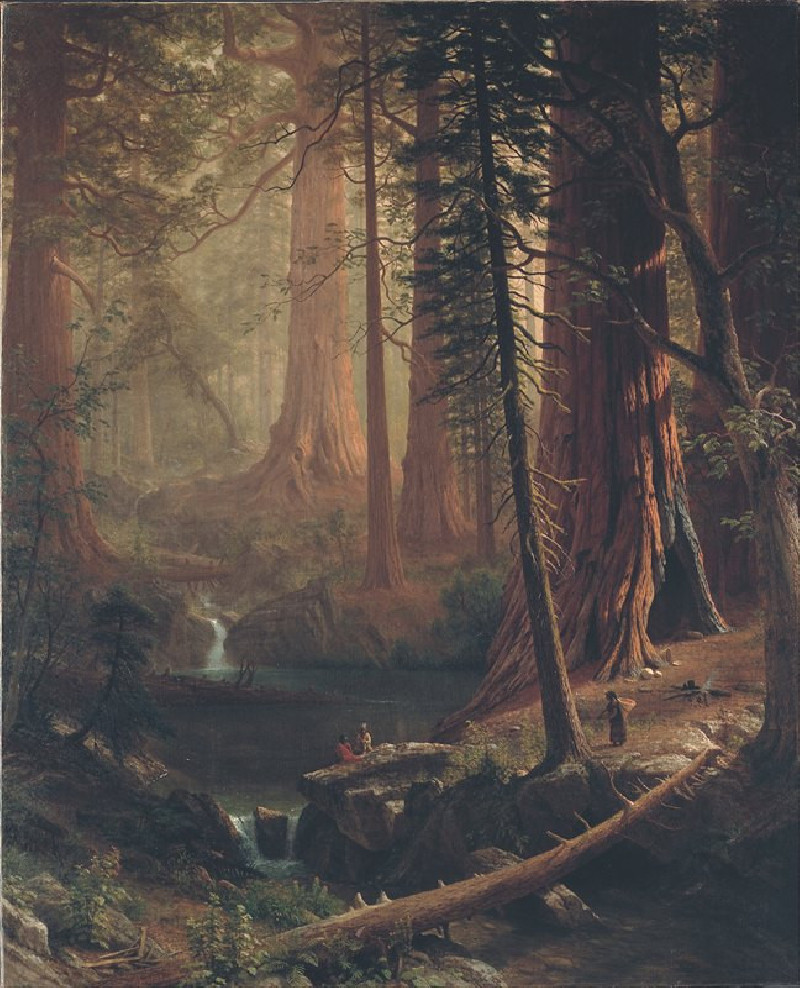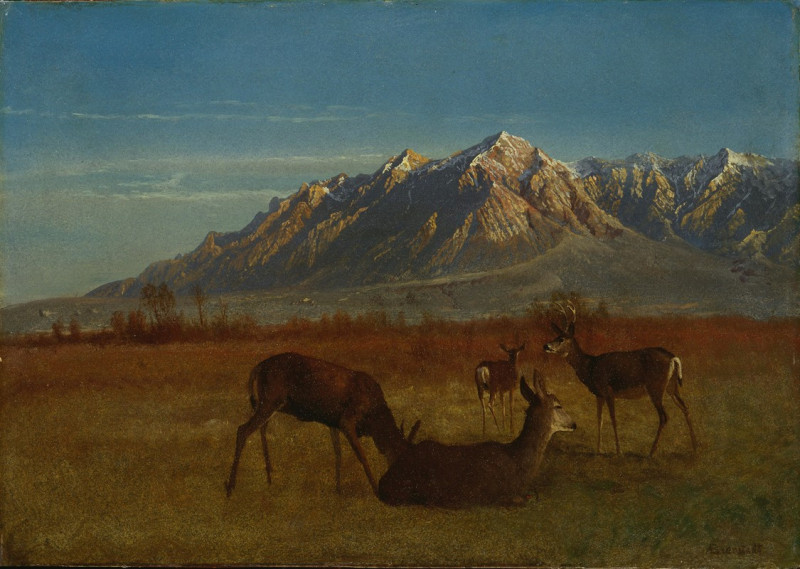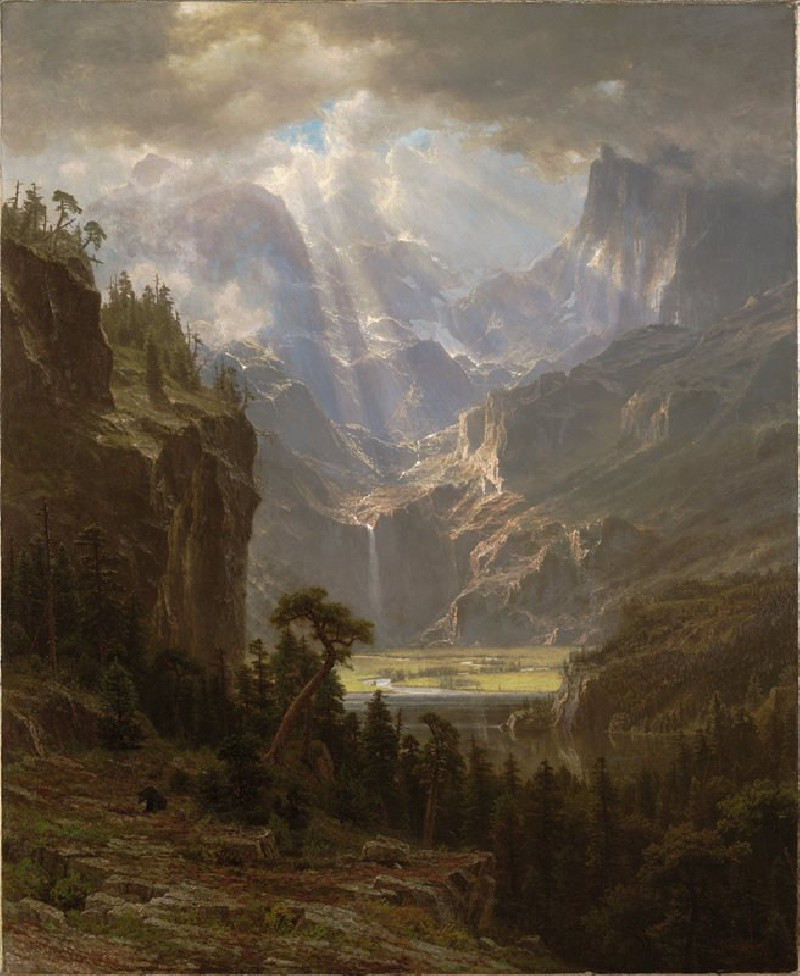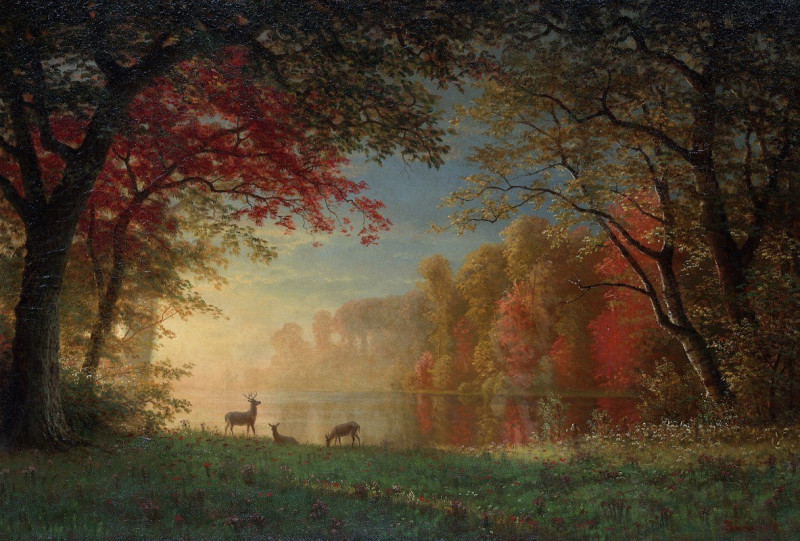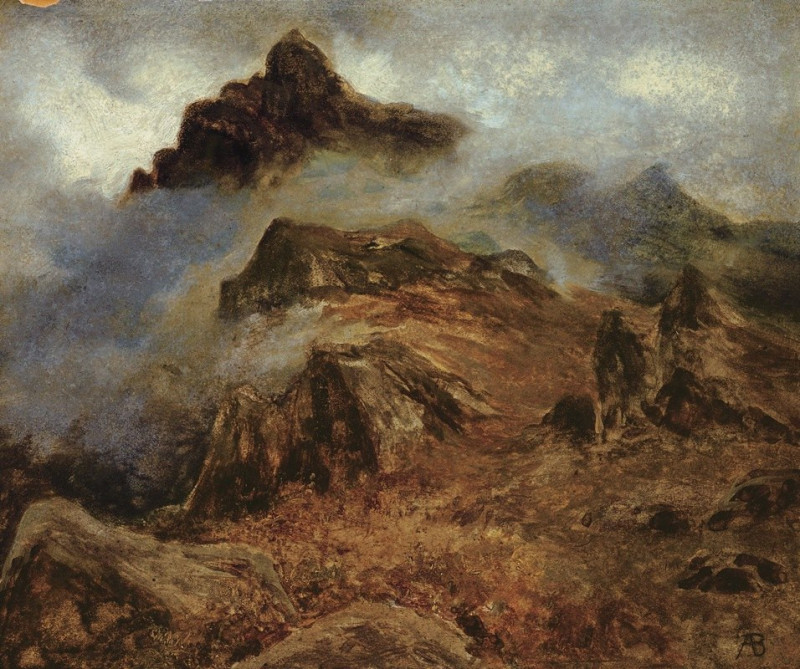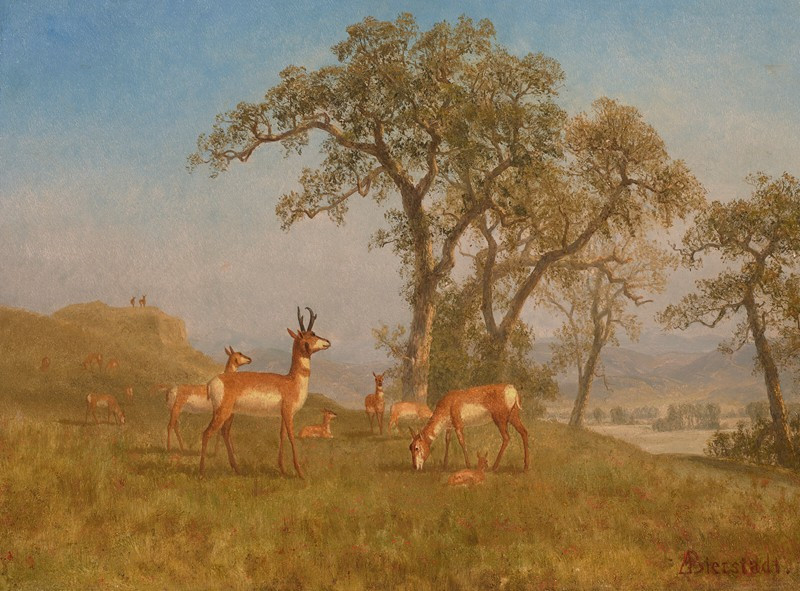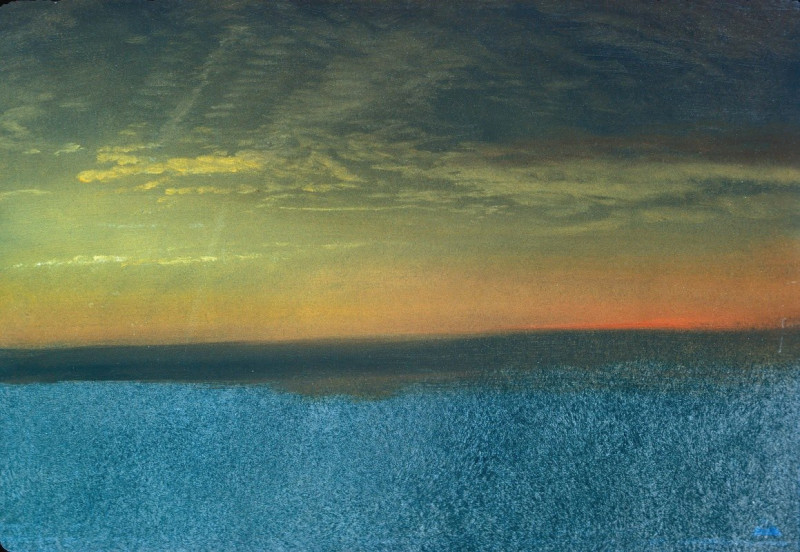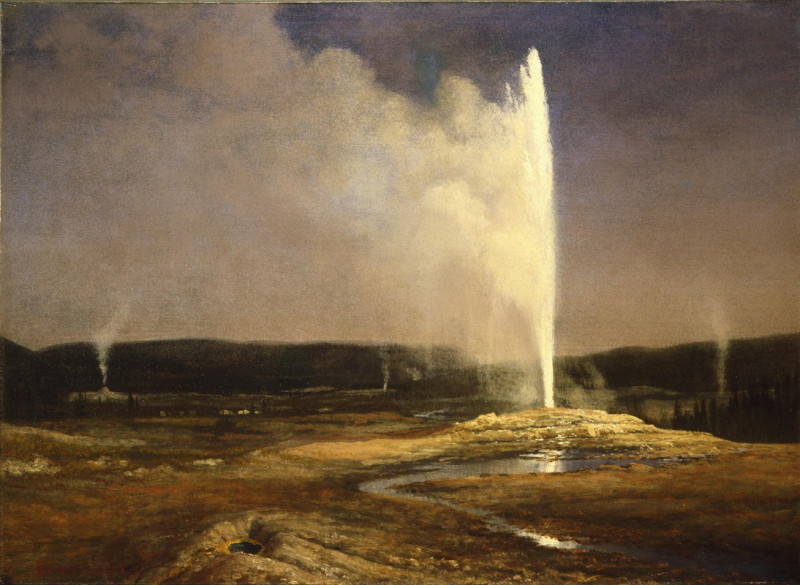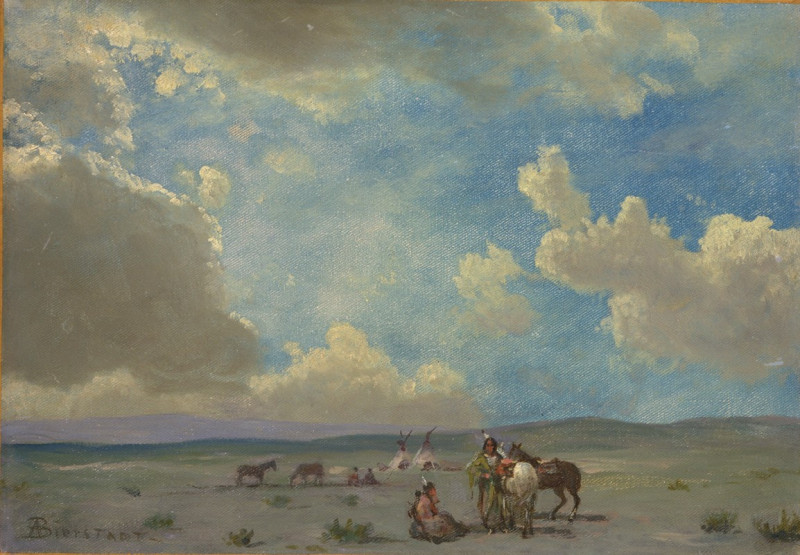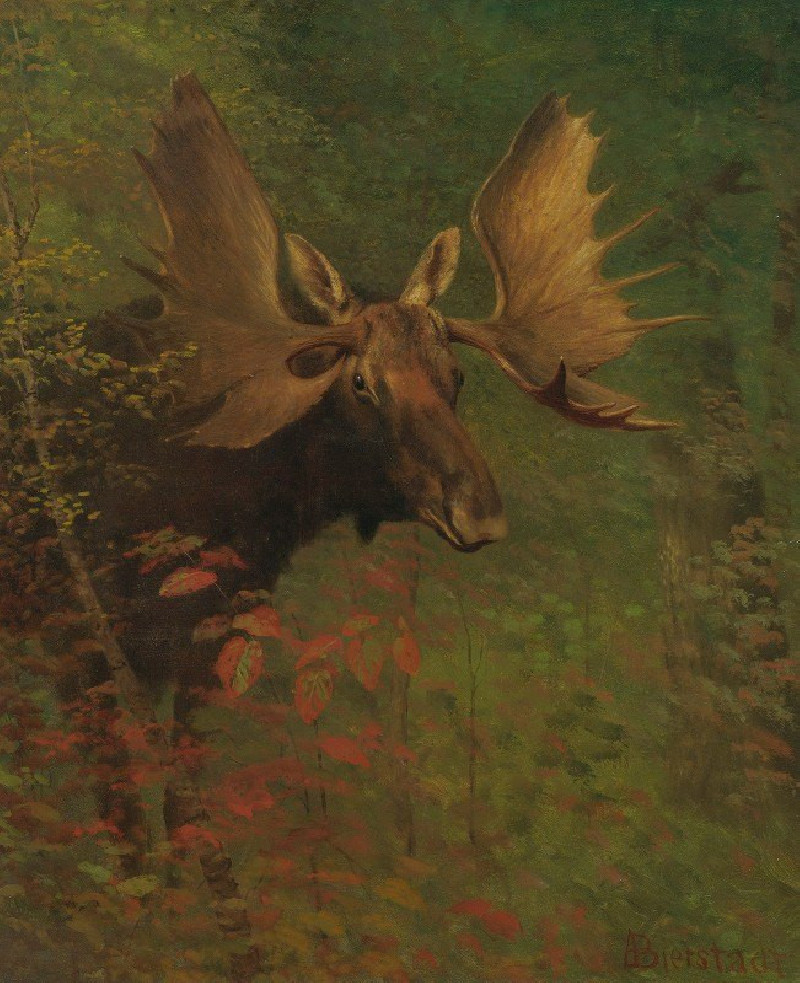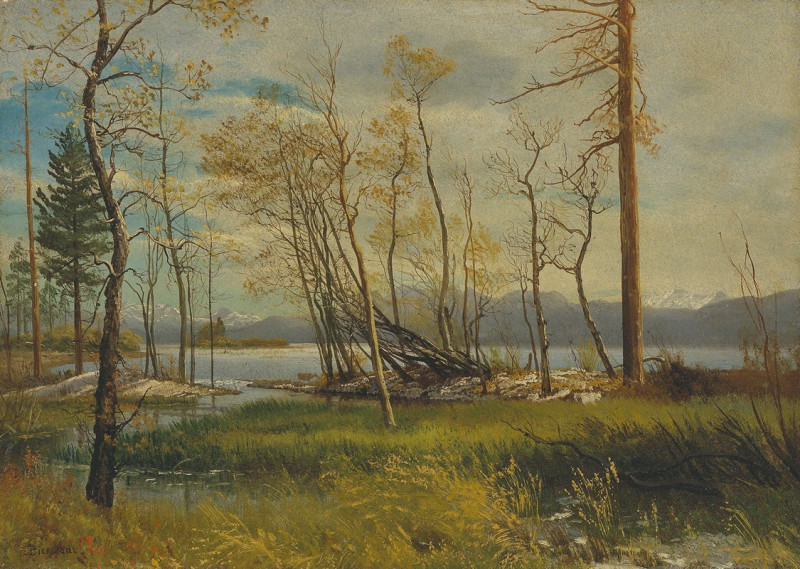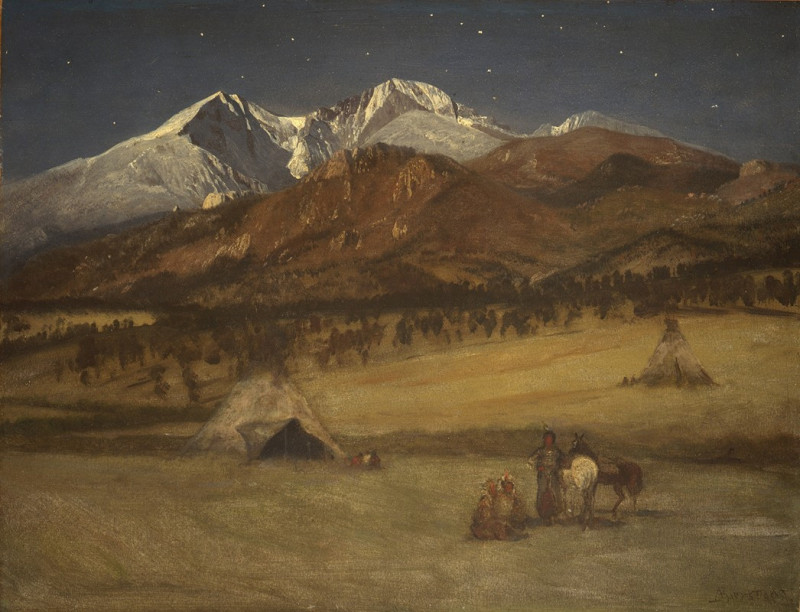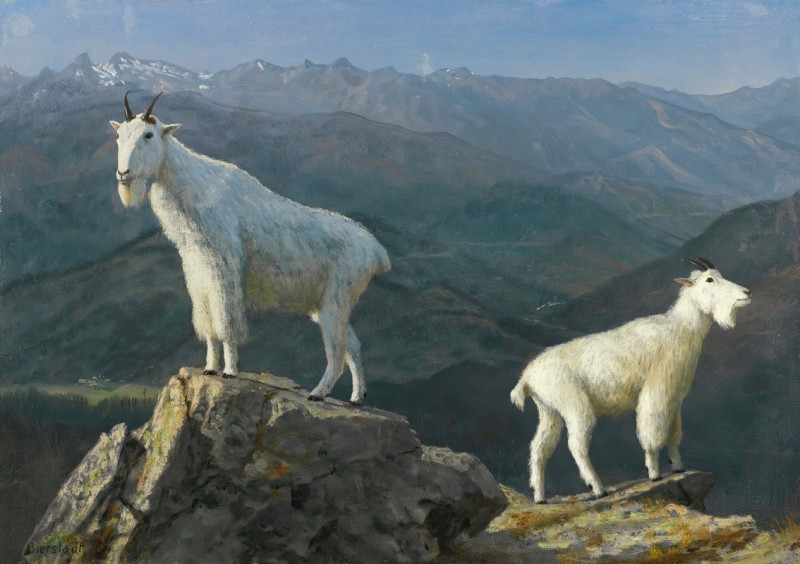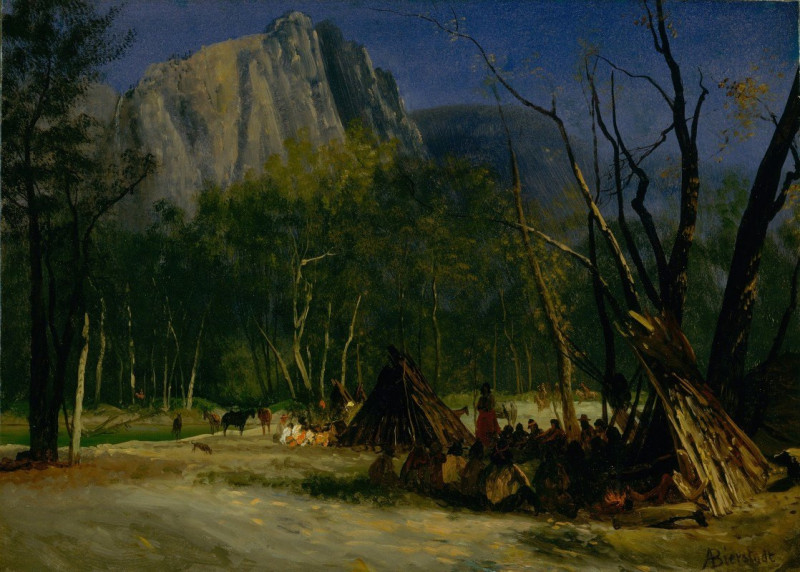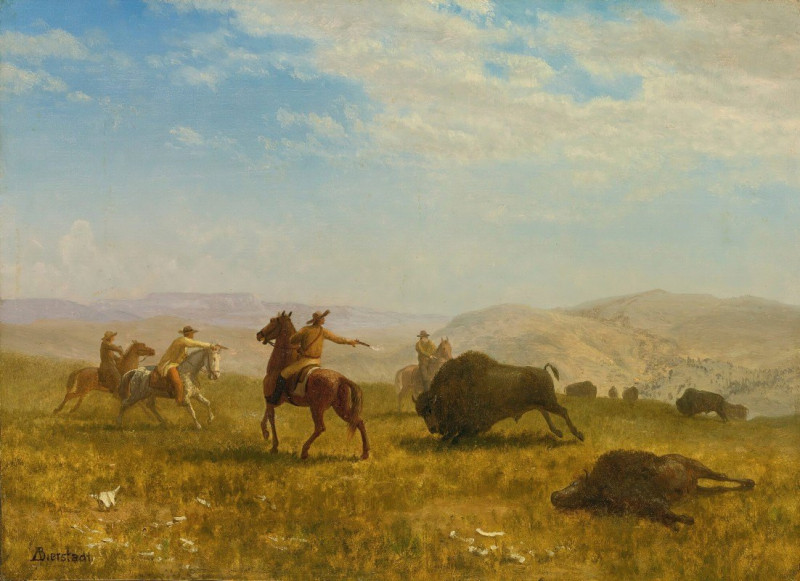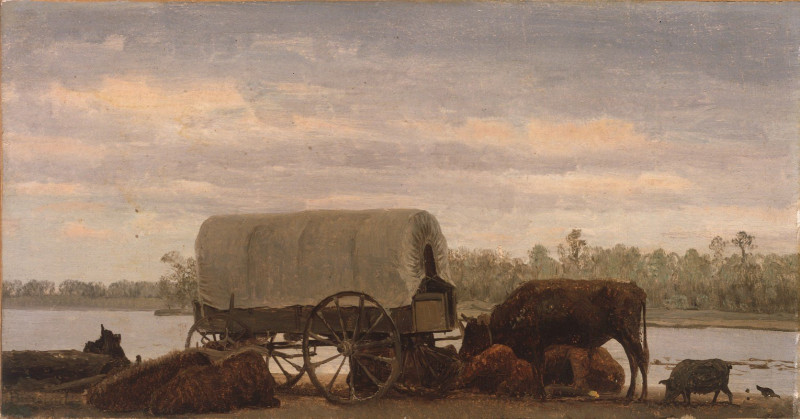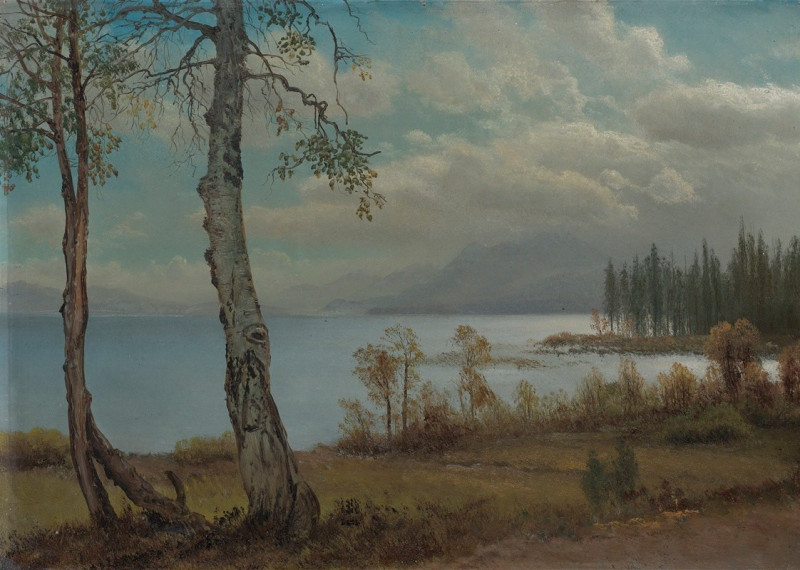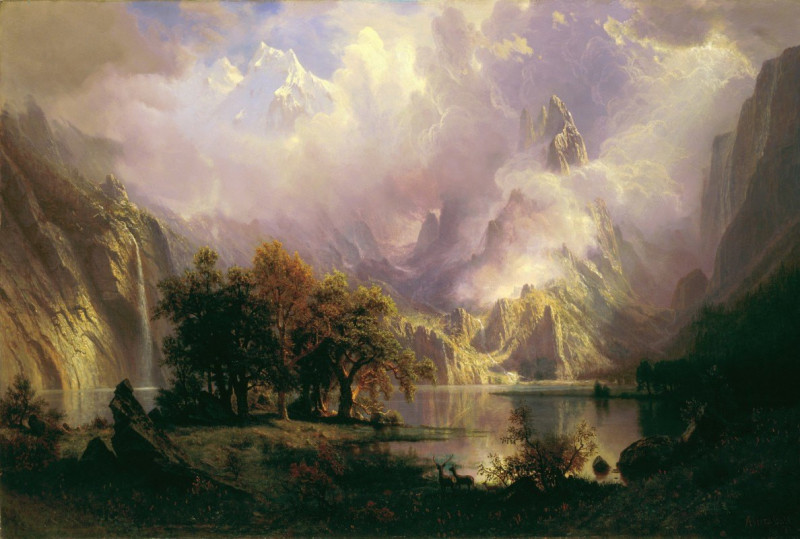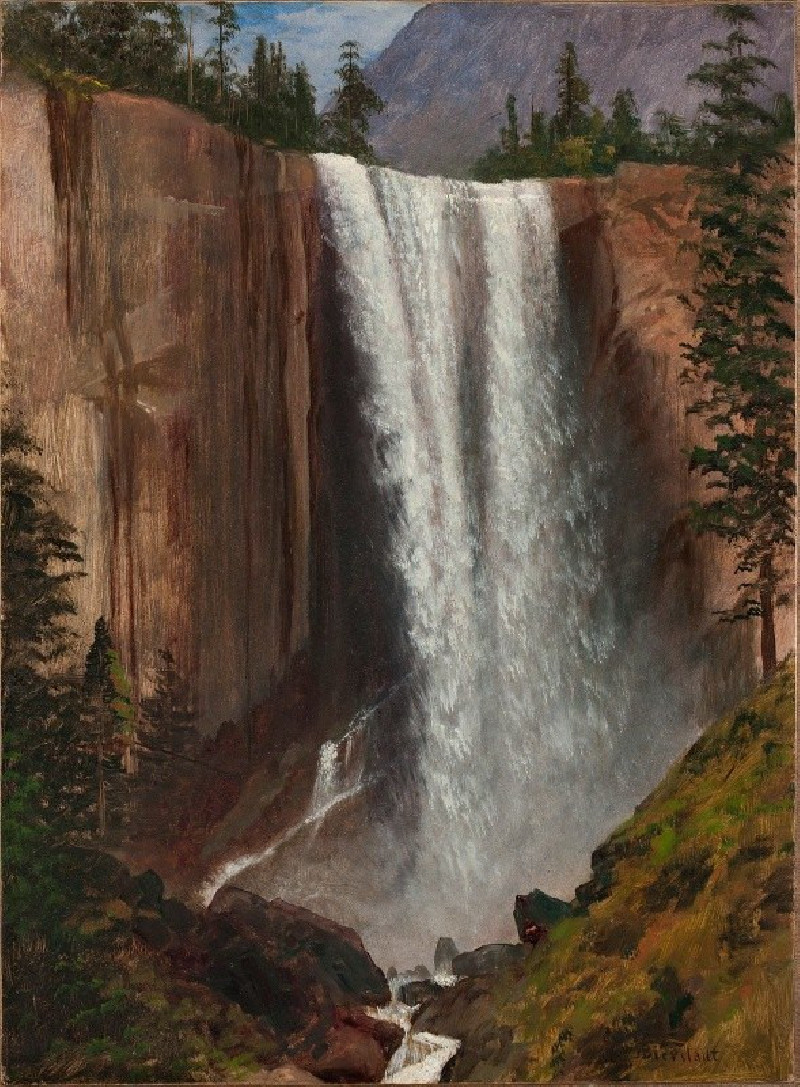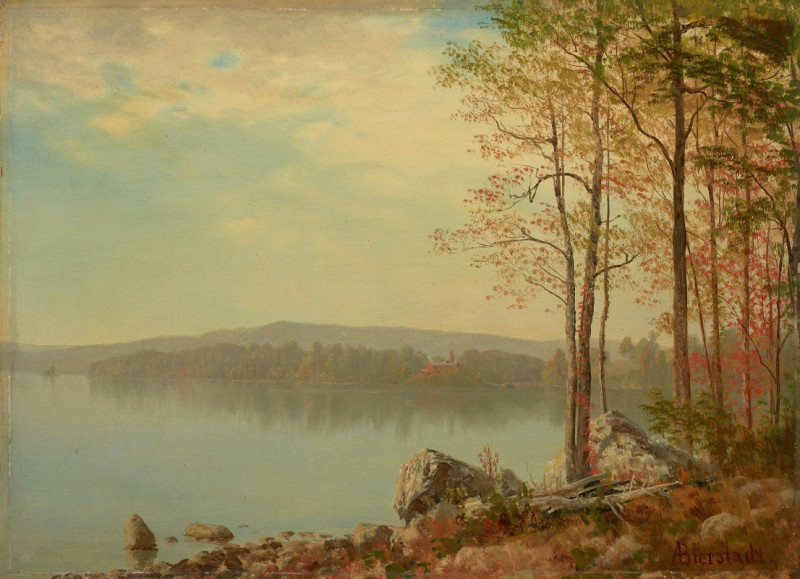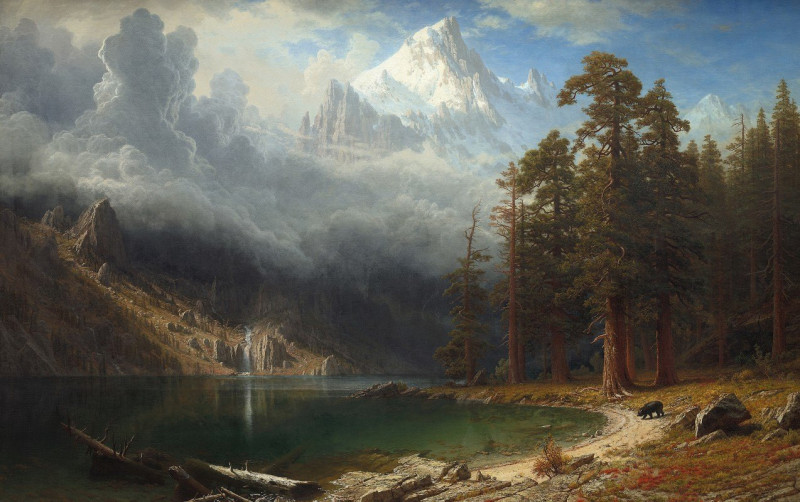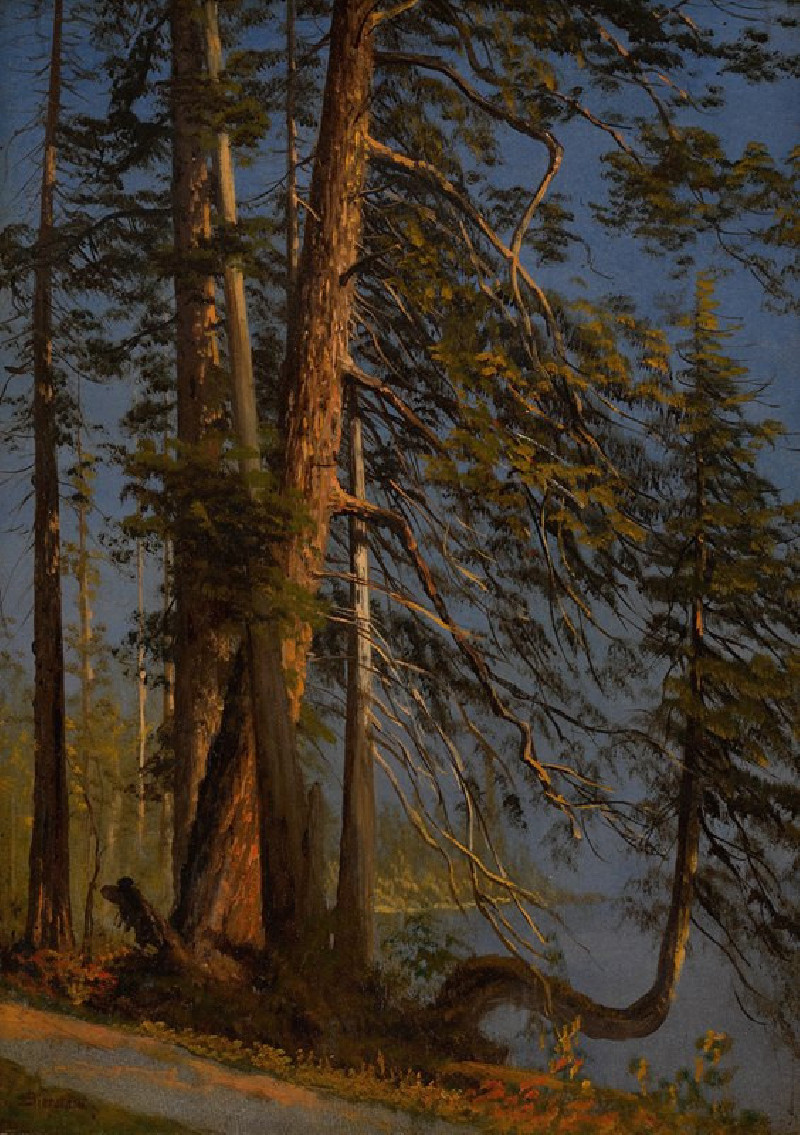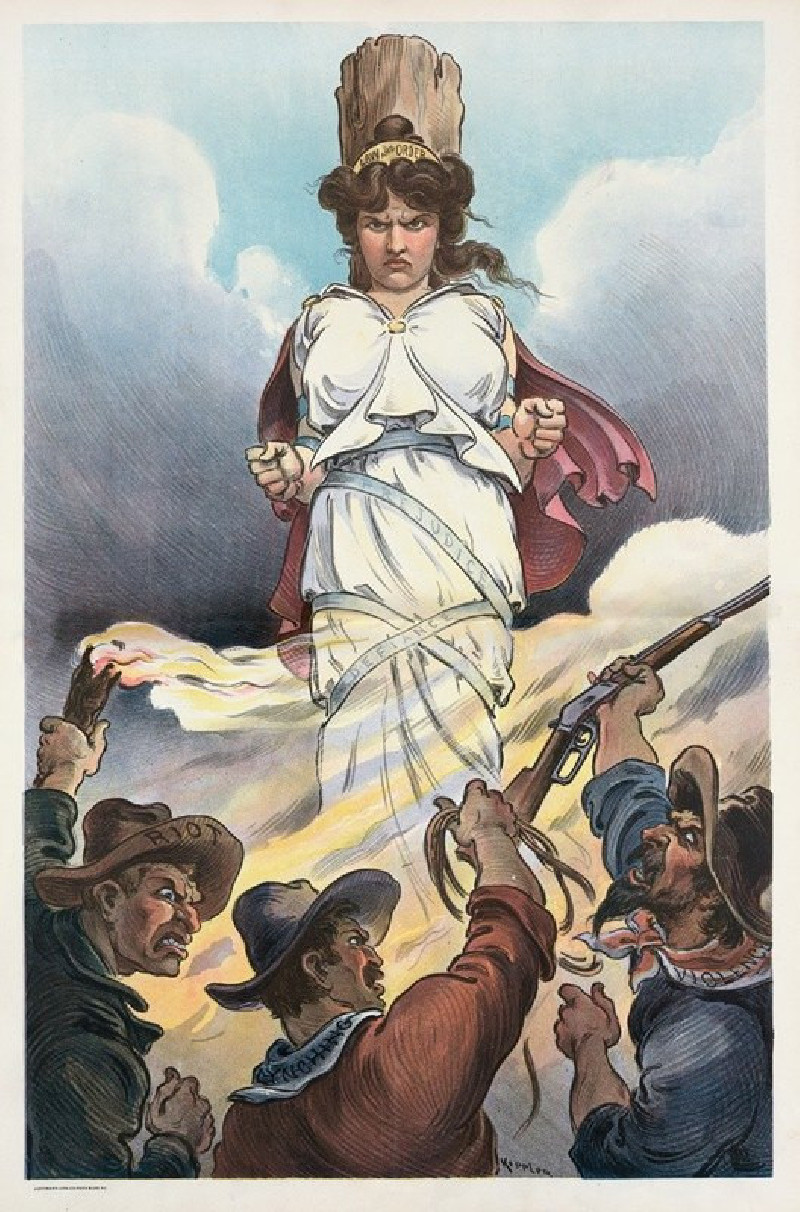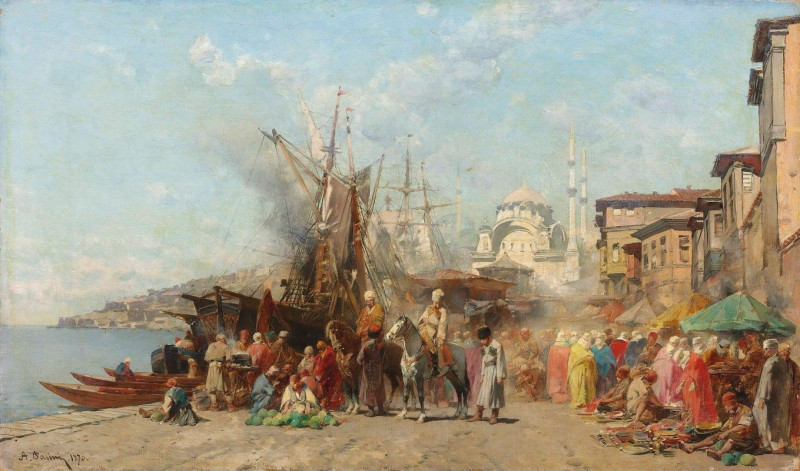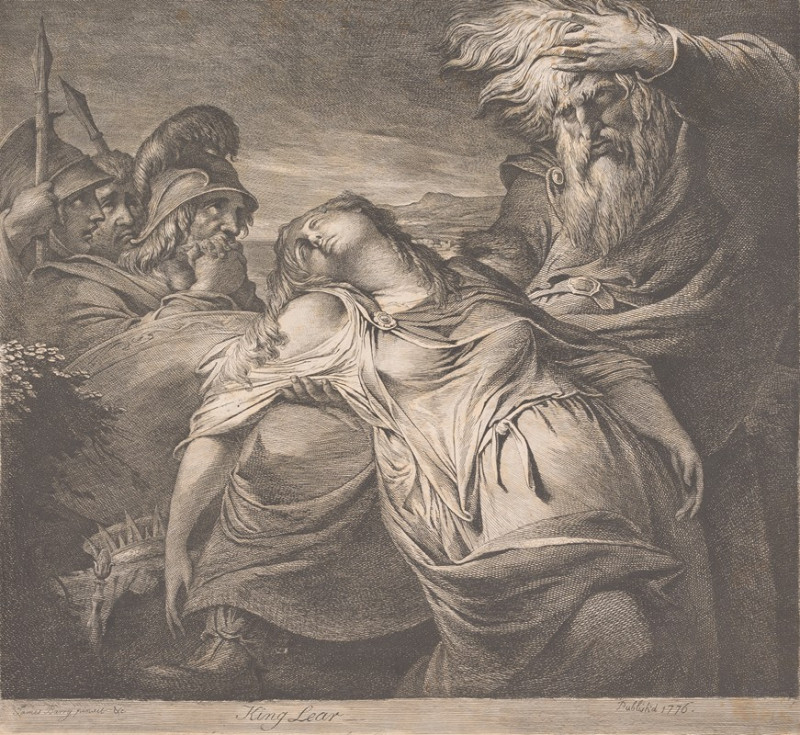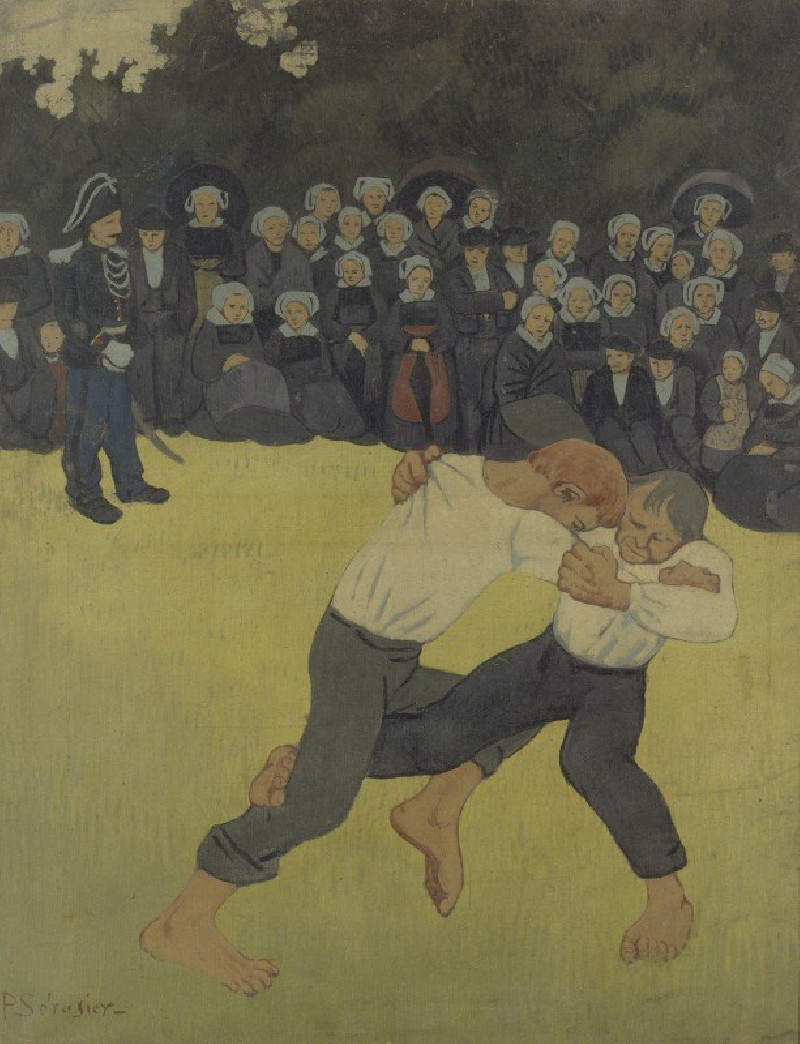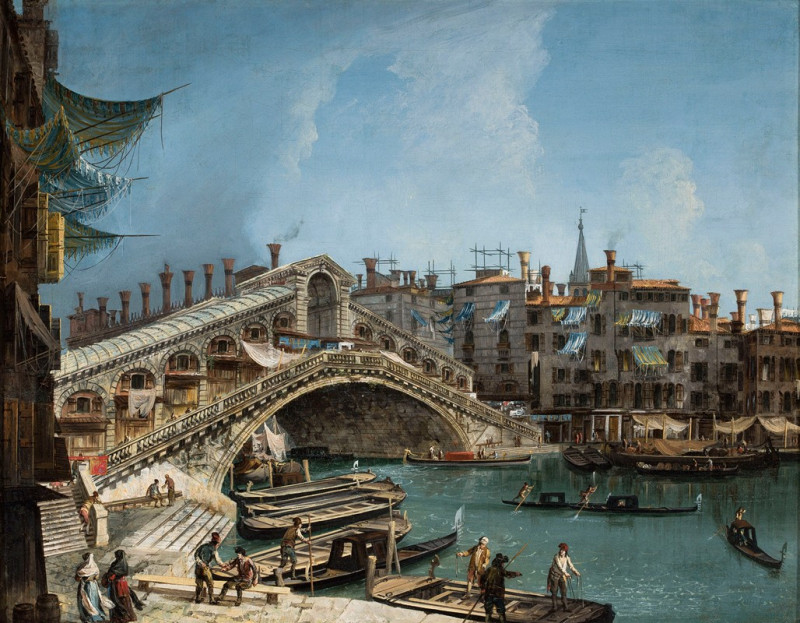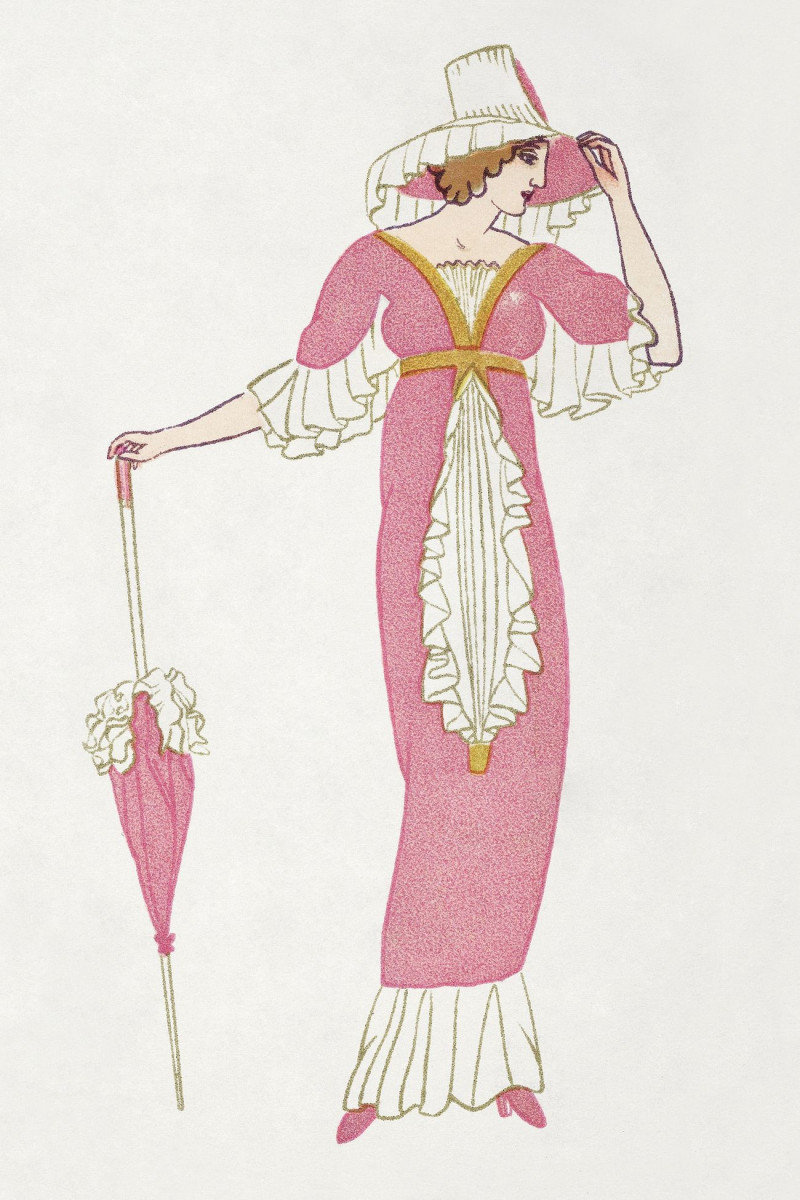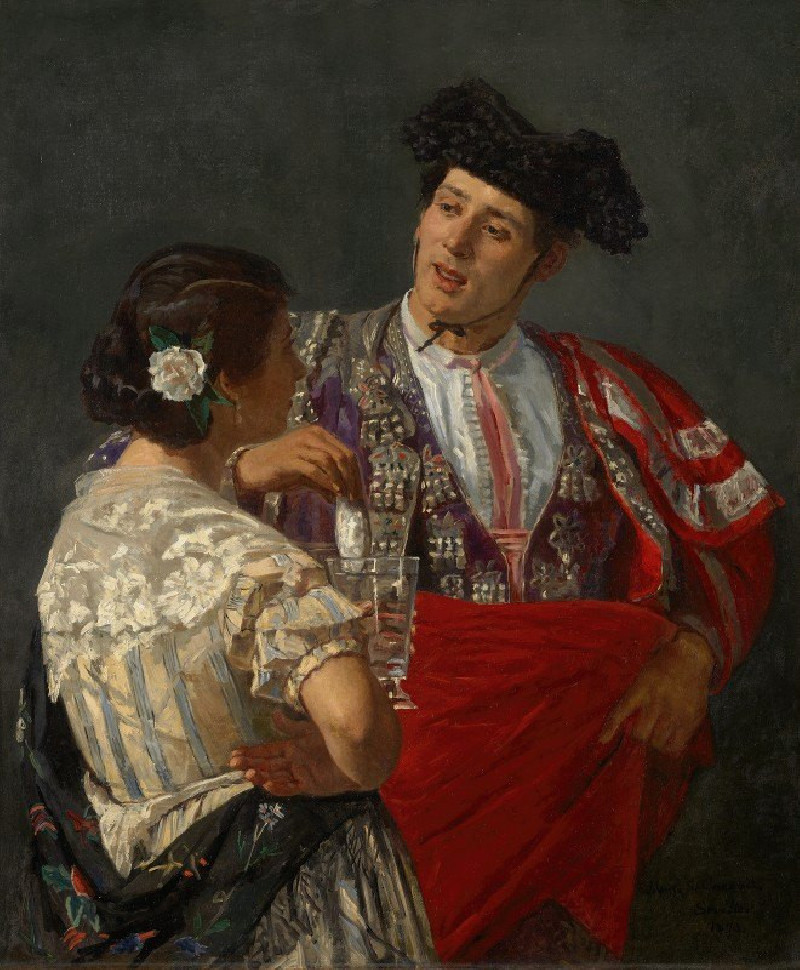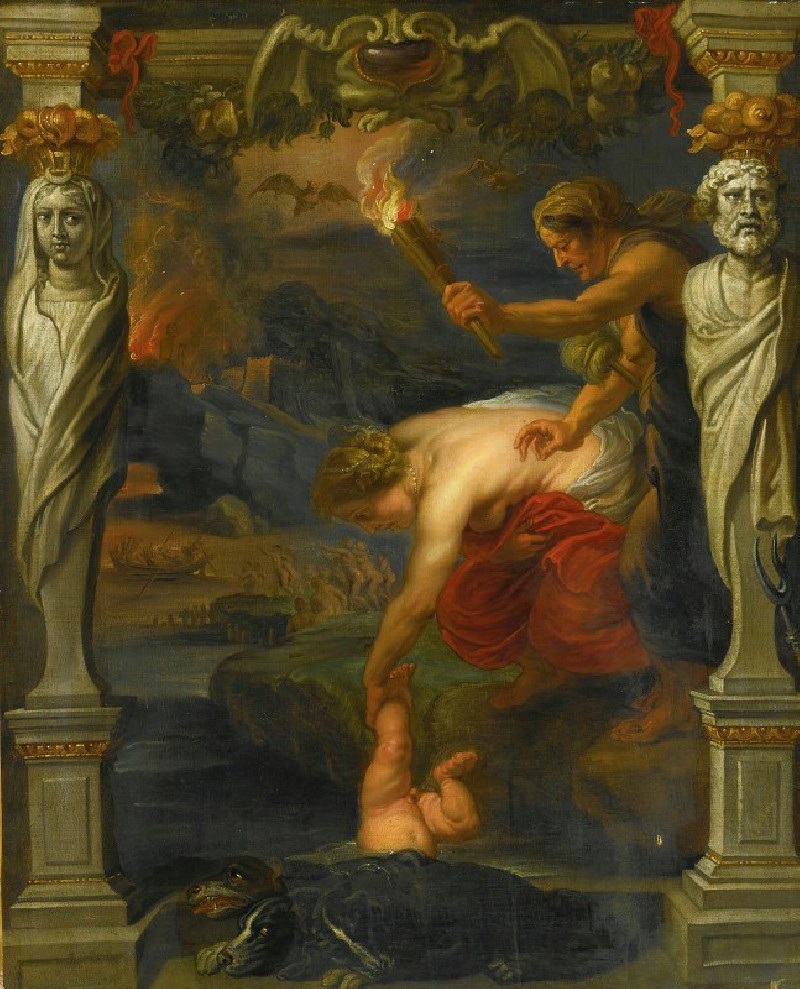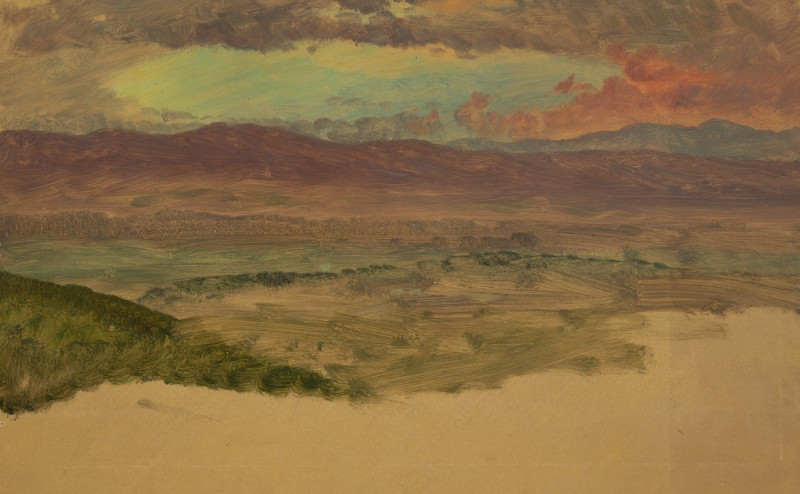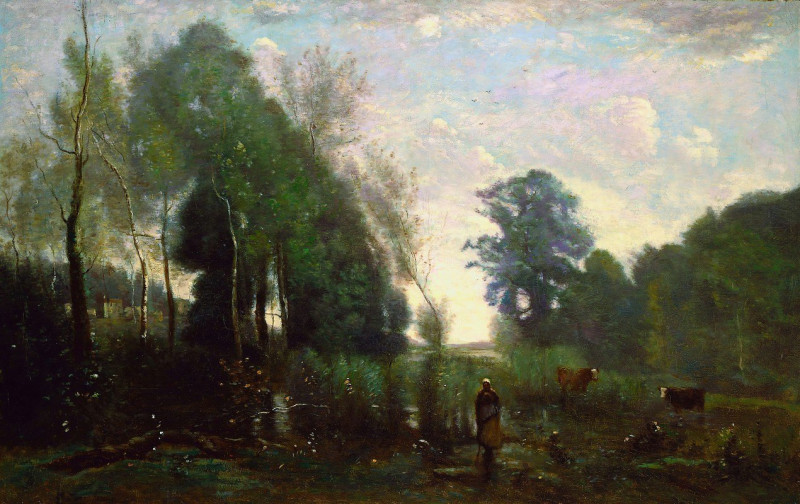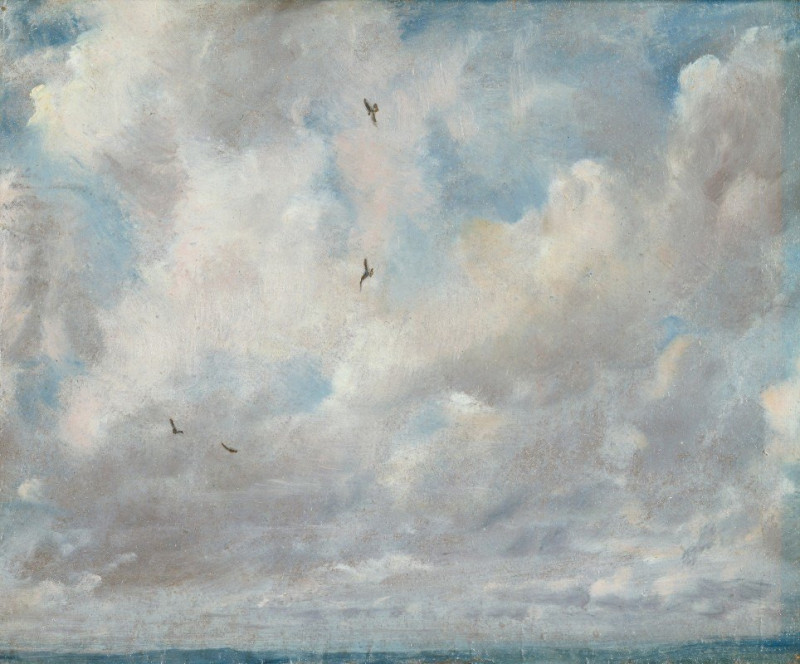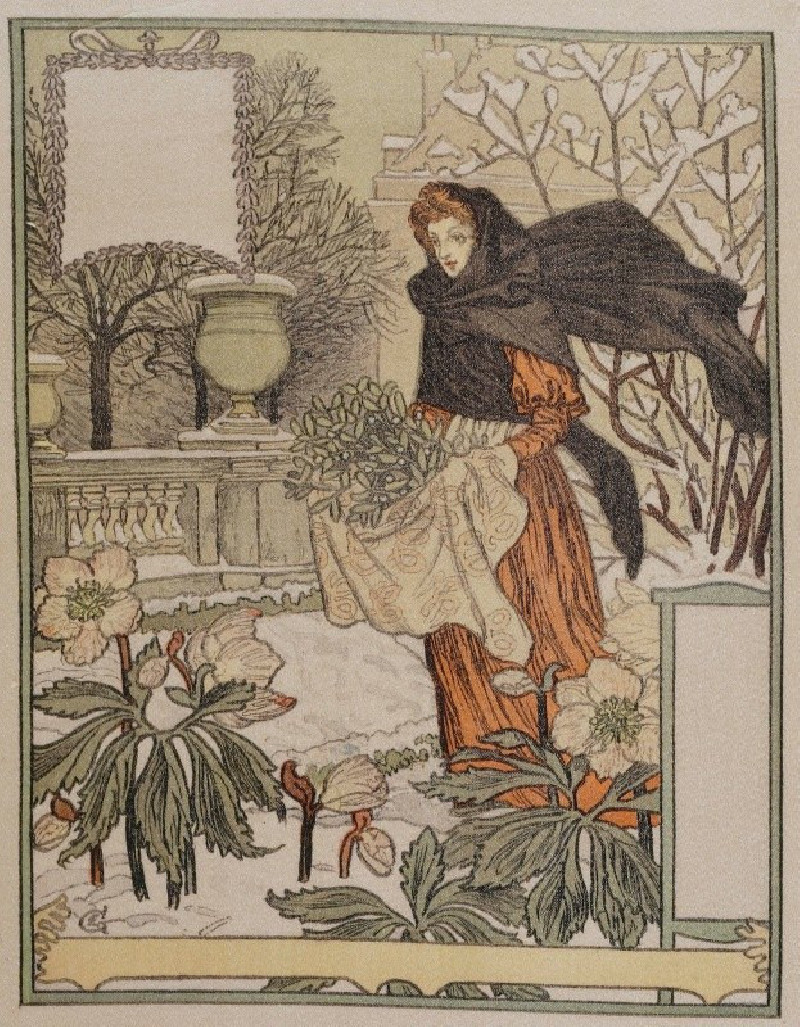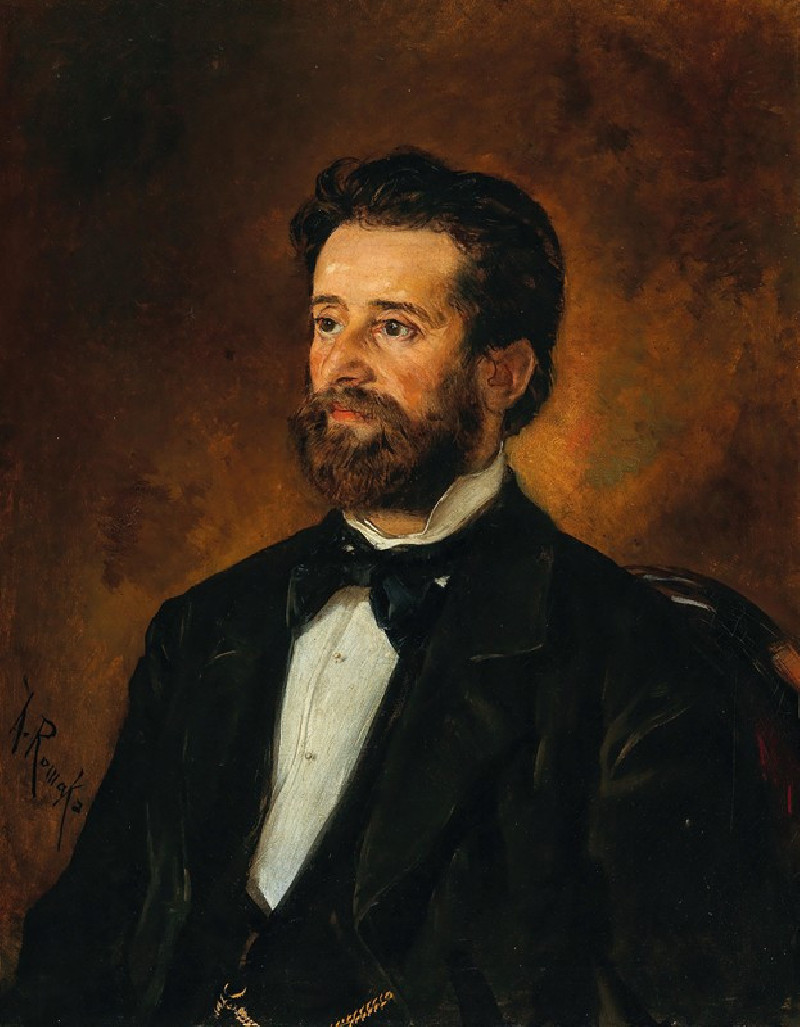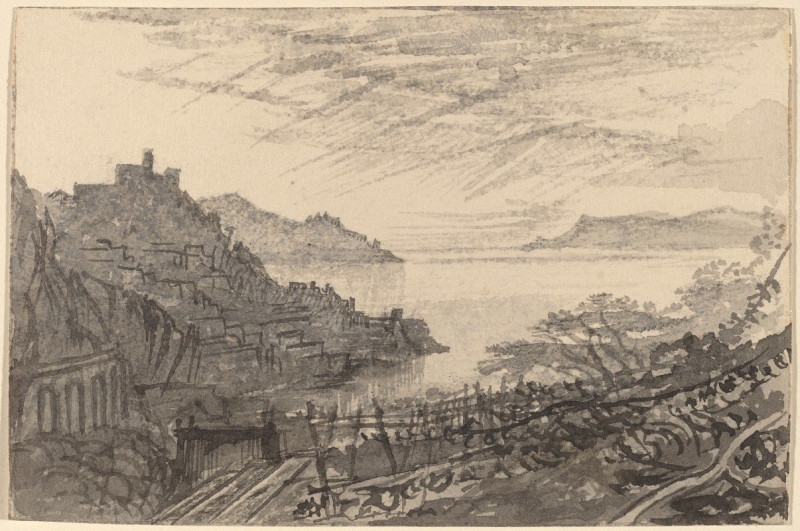Mount Adams, Washington (1875)
Technique: Giclée quality print
Recommended by our customers
More about this artwork
In the evocative landscape painting "Mount Adams, Washington," completed in 1875 by the esteemed artist Albert Bierstadt, we witness an awe-inspiring representation of the American Northwest. Known for his detailed and luminous depictions of expansive wildernesses, Bierstadt captivates art lovers with this piece, showcasing his mastery in playing with light and shadow.The painting vividly portrays Mount Adams, a significant peak in the Cascade Range, basked in the warm glow of sunlight breaking through a dynamic sky of swirling clouds. The majestic mountain looms in the background, its snowy summit reflecting a radiant light that contrasts with the surrounding darkness of the storm clouds.In the foreground, Bierstadt introduces a tranquil, pastoral scene, grounding the lofty spectacle in the routines of daily life. A group of Native Americans is depicted encamped by a serene meadow, engaged in various peaceful activities near grazing horses. This inclusion of human and animal elements brings a touch of narrative to the scene, suggesting a harmonious existence with nature.Around them, the lush greenery of the landscape—marked by dense forests and the open field—enhances the scene's depth and richness. Trees, varying in height and density, frame the composition, leading the viewer's eye towards the mountain's majestic heights."Mount Adams, Washington" is not just a visual pleasure but also a reflection of the period's attraction to the sublime and the picturesque in nature. Through this painting, Bierstadt communicates a deep reverence for the natural world, its untouched beauty, and enduring power, inviting viewers to partake in its tranquil yet awe-inspiring atmosphere.
Delivery
Returns
Albert Bierstadt (January 7, 1830 – February 18, 1902) was a German-American painter best known for his lavish, sweeping landscapes of the American West. He joined several journeys of the Westward Expansion to paint the scenes. He was not the first artist to record the sites, but he was the foremost painter of them for the remainder of the 19th century.



